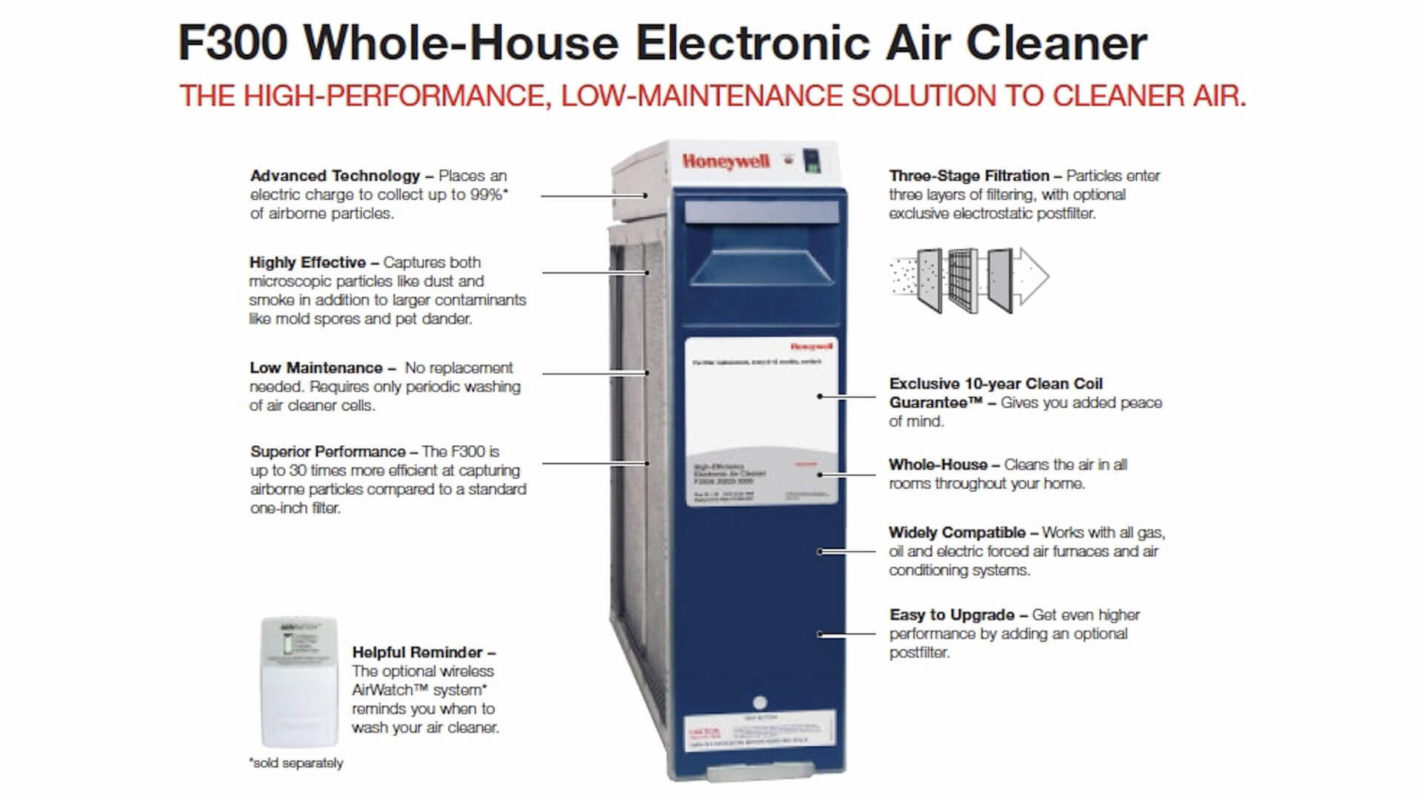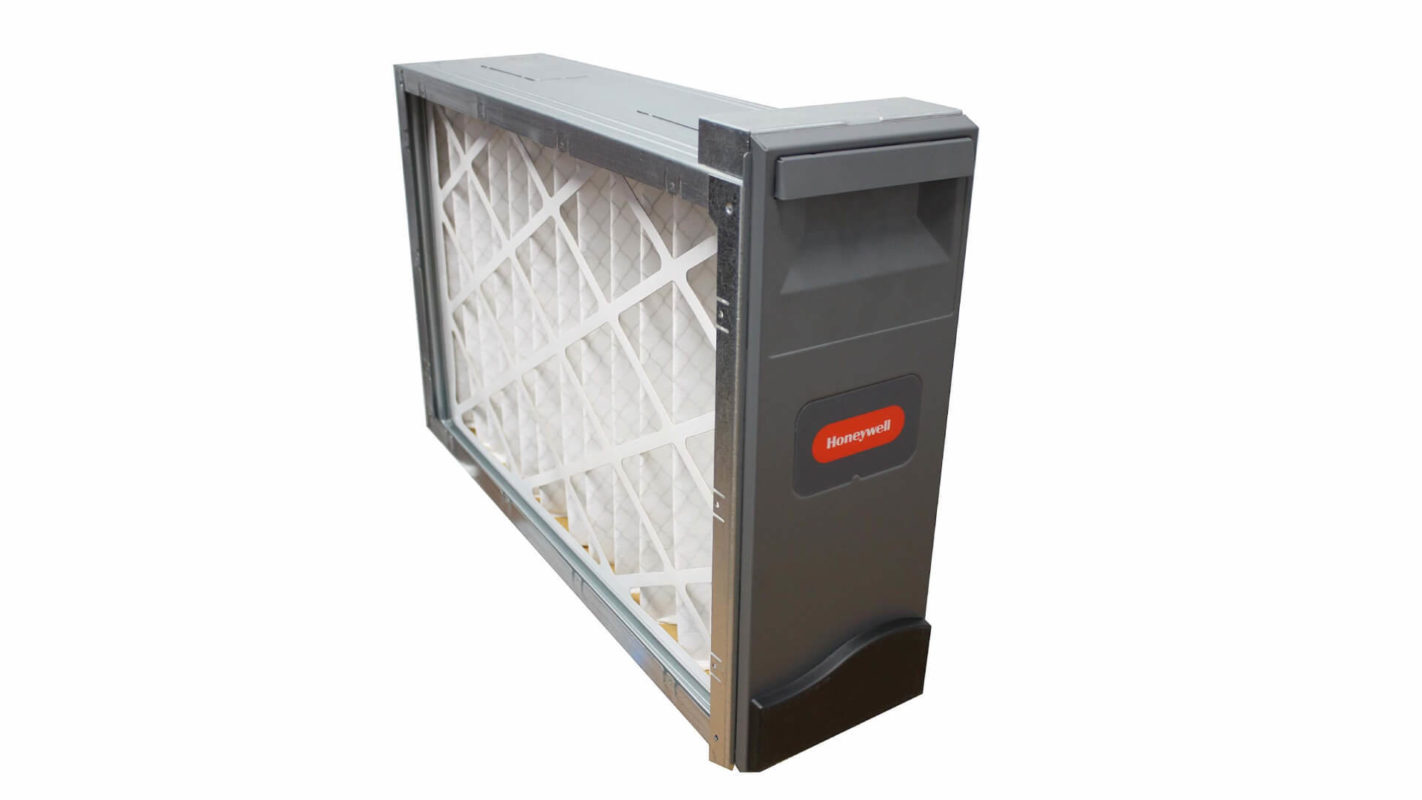Breathe deep! Indoor air is full of microscopic nasties like these (magnified 90 times) that can trigger allergies and respiratory problems.
When it comes to air pollution, there's no place like home. Today's tighter houses keep the weather outside, but they also keep contaminants inside. According to the Environmental Protection Agency, the air indoors where we spend as much as 90 percent of our time can be more polluted than even city smog. And dirt you can see is just the beginning. That dust collecting on end tables and bookshelves is only a fraction of what's actually swimming around in the air: an invisible mix of dust mites, pollen, dander, mold, and smoke that can be annoying to breathe and hazardous to your health.
The first line of defense against airborne contaminants is to keep a house clean and well ventilated. But for some sensitive people that may not be enough. That's where air filters come in. Household air filters are available in two basic types: media filters, which create a physical barrier that traps minute particles, and electronic filters, which use a high-voltage charge to attract and capture contaminants. A few air filters are hybrids that combine both methods, and some include activated carbon elements to combat odor. Learn about the types of air purifiers below.
Typically, air filters are either built into the heating and cooling system (whole-house filters) or are freestanding units that can be placed in individual rooms (portable filters with self-contained fans).
Whole-house filters, like the extended media filter shown here, must be professionally installed in return-air ductwork.
Whole-House Filters
The most efficient way to filter household air is through your home's forced-air heating or central air-conditioning system. The filters are built into the return-air ductwork, trapping particles as air passes through. Such systems are passive; as long as the fan is running, they are constantly filtering all the air in your house. Whole-house filters come in four main types.
Flat filters
If you have a forced-air furnace, you've already got a rudimentary air-filtration system: That matted-fiberglass filter that should be changed once a month. "You can't change it often enough". When it clogs with dust, it stops working and overworks the furnace. In fact, those filters are designed to protect your furnace from large particles of dust, and while they might keep surfaces in your house a bit cleaner, they won't block the microscopic particles that are most irritating to lung tissue. Pleated filters, which pack more material in the same amount of space, cost a few bucks more and do a slightly better job. By far the best pleated filters are electrostatically charged to attract allergens like pollen and pet dander. They cost around $15 and should be changed every two to three months.
Extended media filters
Picture a stack of furnace filters about 8 inches thick and you get the idea of an extended media filter. These boxy units contain an accordionlike pile of filtration media, which makes them more effective than regular fiberglass filters. They require professional installation because the large filter holder must be plumbed into the ductwork. The price, including installation, ranges from $400; you'll need to replace the $40-to-$60 filter every year.
Electronic filters
These high-tech units, sometimes called electrostatic precipitators, are also incorporated into the ductwork. As air passes through, a high-voltage current puts an electrical charge on particles. At the other end of the unit, oppositely charged collector plates grab the particles like a magnet. Electronic filters work especially well on smoke particles too small to be trapped in media filters. One independent test found such filters worked about 30 times as well as regular fiberglass filters. (There is no industry yardstick for measuring the effectiveness of whole-house units, because performance is affected by a home's blower and ductwork.) Unlike media filters, electronic filters never need replacing, but the aluminum collector plates must be cleaned in soapy water every few months. The process of charging particles, called ionization, may produce trace amounts of ozone, a lung irritant (see "Eye on Ions," page 66). Electronic filters cost from $600 installed and require a 120-volt electrical outlet.
Ultraviolet Filters
People worried primarily about germs can consider an ultraviolet filter. Typically, UV filters are built-in components, sold as add-ons to a whole-house electronic precipitator (as in, add on $400 to $800). The ultraviolet light zaps airborne bacteria and viruses into oblivion, which is why hospitals use UV air filters in tuberculosis wards. Of course, the bug has to reach the filter before it can be zapped; if someone sneezes in your face, UV technology won't help.
Schedule service / Get my free quote
Fast, reliable, and quality results. Contact us for a free quote today.


